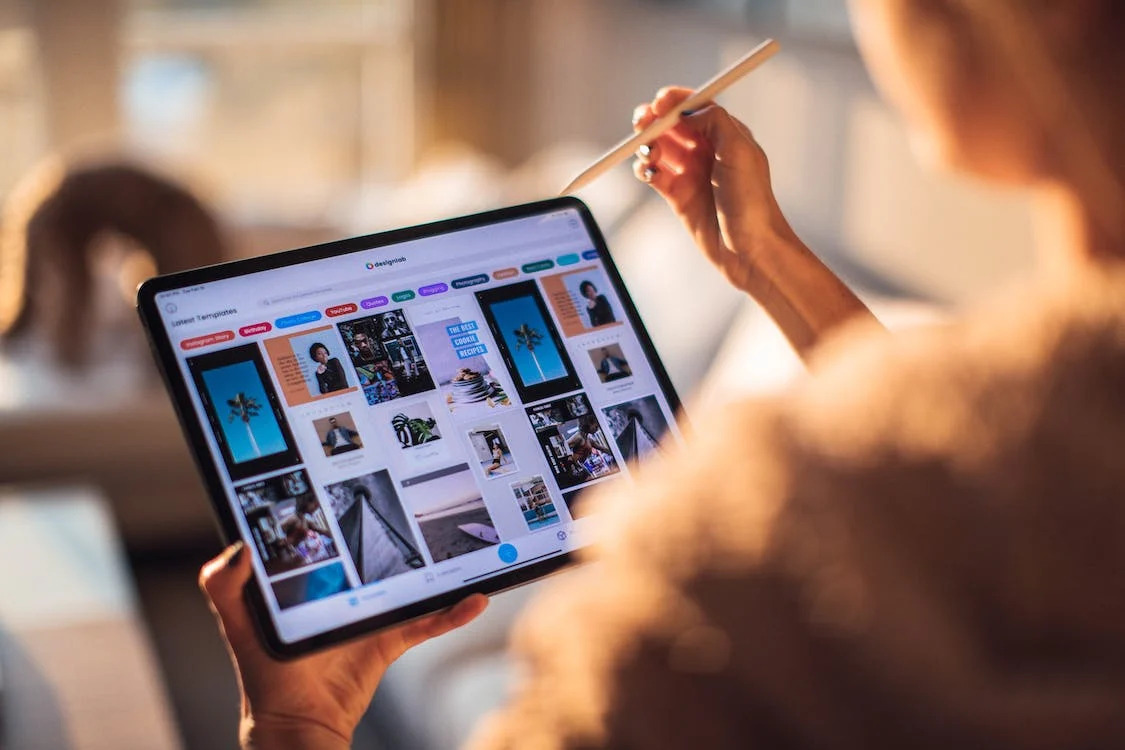In today’s tech-driven world, every mobile app you enjoy is crafted to perfection by skilled mobile designers. This job holds strong appeal for those with a love for design and a creative flair. However, it may not be a suitable path for everyone.
To gain in-depth knowledge about this career, explore the advantages and disadvantages of being a mobile designer below. Additionally, we’ll provide valuable tips to help you kickstart this job swiftly. Now, let’s continue scrolling to uncover some exciting insights!
Overview of Mobile Designers
First, let’s talk about mobile design, covering its key concepts, required skills, and the unique work environment associated with it!
As a mobile designer, you create apps for tablets and phones. You can specialize in Android or iOS, or design apps for multiple platforms.
Your responsibilities involve designing user-friendly web applications, developing functional apps, and testing them for compatibility across various screen sizes.
You’ll also work closely with cross-functional teams throughout the entire design process.

To create successful mobile apps, you need a mix of hard skills and soft skills. Here’s a breakdown of the key skills to develop:
Hard Skills:
- Master of UI and UX design
- Proficient in Adobe XD, Sketch, Figma, or similar design software
- Mastery in crafting interfaces that effortlessly adapt to diverse screen sizes and orientations
- Highly skilled in developing interactive prototypes for usability testing, analyzing feedback, and refining designs using user insights
- Knowledgeable in HTML and CSS, with a basic understanding of JavaScript when needed
- Possess a strong understanding of platform-specific design principles, such as iOS Human Interface Guidelines and Material Design Guidelines

Soft Skills:
- Creativity
- User-focused approach
- Effective communication and collaboration
- Meticulous attention to detail
- Problem-solving ability
- Adaptability
- Strong time management skills
Because this role demands creative thinking and the ability to produce standout, user-engaging designs, creativity, and strong design skills are essential. These skills are necessary for you to be able to complete the tasks effectively.
Mobile designers work in diverse environments. The need for talented mobile designers spans industries, including tech giants and small startups alike. Common work settings include:
- Tech firms
- Creative agencies
- Internal design teams
- Application studios
- Game development companies
- Social media organizations
Most mobile designers work on-site, but freelancing is an alternative. You can take on projects from different clients, granting you the freedom to work from anywhere.

Now, let’s explore the part you’ve been eagerly anticipating: the pros and cons of mobile design. You will be excited about it!
1. Good Salary
Being a mobile designer offers the potential for a high salary and job stability, which is a notable advantage. The need for skilled mobile designers has risen alongside the widespread use of smartphones and mobile apps.
Businesses understand the significance of well-designed mobile apps and websites in attracting and retaining customers. This recognition makes mobile designers a valuable asset.
As a result, mobile designers often have access to high-paying jobs and a consistent flow of job opportunities.

2. Continuous Improvement
Mobile design is a field that evolves constantly. It is marked by ongoing innovation and a dynamic nature.
Technology advances quickly. Design trends change, and user expectations evolve. Consequently, mobile designers must continuously improve and learn to keep up.
This ongoing pursuit of skill enhancement is intellectually stimulating and keeps professionals on the industry’s cutting edge. Mobile designers constantly explore new design approaches, experiment with emerging tools, and refine their skills.
Their commitment to growth guarantees their ability to provide outstanding user experiences in a perpetually changing landscape.
3. Creative Outlet
Mobile design is a distinct creative outlet. Designers have the opportunity to blend aesthetics, functionality, and user experience.
This enables them to craft visually appealing and user-friendly mobile apps and websites. For creative individuals, this blend of artistic expression and problem-solving can be highly fulfilling.

4. Diverse Industries
The versatility of mobile design is another compelling aspect of the profession. Mobile designers aren’t limited to one industry. Their skills are in demand across a wide range of sectors.
Mobile design opens doors to a variety of thrilling opportunities. It can involve improving healthcare accessibility, transforming financial services, enhancing gaming experiences, or revolutionizing e-commerce.
This diversity allows designers to align their work with their interests and values. They can select projects and industries that resonate with them, ensuring each day at work is fulfilling and purposeful.
5. Collaborative Opportunities
Collaboration is a fundamental aspect of mobile design. Designers often work closely with various teams. These teams can include developers, product managers, marketers, and researchers.
This collaborative setting encourages creativity and innovation by harnessing the expertise of team members. It results in more comprehensive mobile products.
6. Tight Deadlines
Mobile design projects often come with tight deadlines and intense time pressure. Clients and stakeholders often require swift results. This is true in competitive industries where being first to market can provide a significant advantage.
Meeting these deadlines is essential. However, it can be challenging to uphold design quality within these constraints.
Mobile designers must excel in time management and project planning. They also need to maintain composure under pressure. Finding a balance between speed and quality is an ongoing challenge in this field.
7. Competitive Industry
The mobile design industry is exceptionally competitive. It draws in a substantial number of skilled professionals competing for the same projects and positions. So, obtaining coveted projects or steady employment can be quite challenging.
In this highly competitive field, standing out is essential. To do so, designers must build a strong portfolio, establish a personal brand, and actively network.
Competition can serve as motivation, but it also highlights the necessity for ongoing skill development and self-improvement to stay competitive.
8. Feedback and Testing
In mobile design, a challenge lies in gathering feedback and testing your mobile interface. You must design for continuous interface improvement and iteration. Besides, collecting and analyzing feedback from both users and stakeholders.
Additionally, you need to test your interface on various devices, platforms, and environments. Your goal is to identify and resolve any errors or issues that could impact the user experience.
9. Ethics and Privacy
Another challenge in mobile design pertains to the ethics and privacy of your mobile interface. You have to design with a focus on user trust and security. Besides, respect their rights and choices concerning personal data and information.
Compliance with laws and regulations governing user data collection, storage, and usage is crucial. Moreover, you must inform users and obtain their consent.
To tackle this challenge effectively, implement encryption, authentication, and authorization measures to safeguard user data. Employ privacy-by-design and privacy-by-default strategies to minimize data collection and sharing.

Should You Become a Mobile Designer?
Embarking on a career as a mobile designer involves careful consideration. You should reflect on your skills, interests, and the evolving digital landscape.
Mobile designers hold a pivotal role in influencing the user experience for countless smartphone and tablet users worldwide.
If you have a passion for crafting visually appealing and user-friendly mobile interfaces, that’s a strong start. A solid grasp of design principles is also essential.
Staying current with industry trends can make a career in mobile design a rewarding choice. Be prepared for the fast-paced nature of the field. It demands adaptability and continuous learning due to rapidly advancing technologies.
Ultimately, your decision to become a mobile designer should match your creative instincts, and also be dedicated to crafting seamless digital experiences for users. It requires a willingness to embrace change.

FAQs
What distinguishes a mobile designer from a web designer?
Mobile designers create designs for mobile apps. They primarily focus on small screens and touch interactions. Web designers primarily design websites. They consider larger screens and compatibility with various browsers.
Can I be a mobile designer without a degree?
You can pursue a career in mobile design without a degree. Many designers learned through online courses and practical experience. However, having a Bachelor’s degree can enhance this career path!
With whom do mobile designers work with?
Mobile designers collaborate with UI and UX designers, developers, product managers, and clients to design and build mobile apps.
Conclusion
The post you’ve just read has covered both the pros and cons of being a mobile designer. In addition, it also provides information explaining this profession, the required skills, and the working environment.
We aim to broaden your understanding of this field. And we’re committed to being your trusted guide that you can always rely on. Your success in the field of mobile design is of the utmost importance. Thank you for reading!
